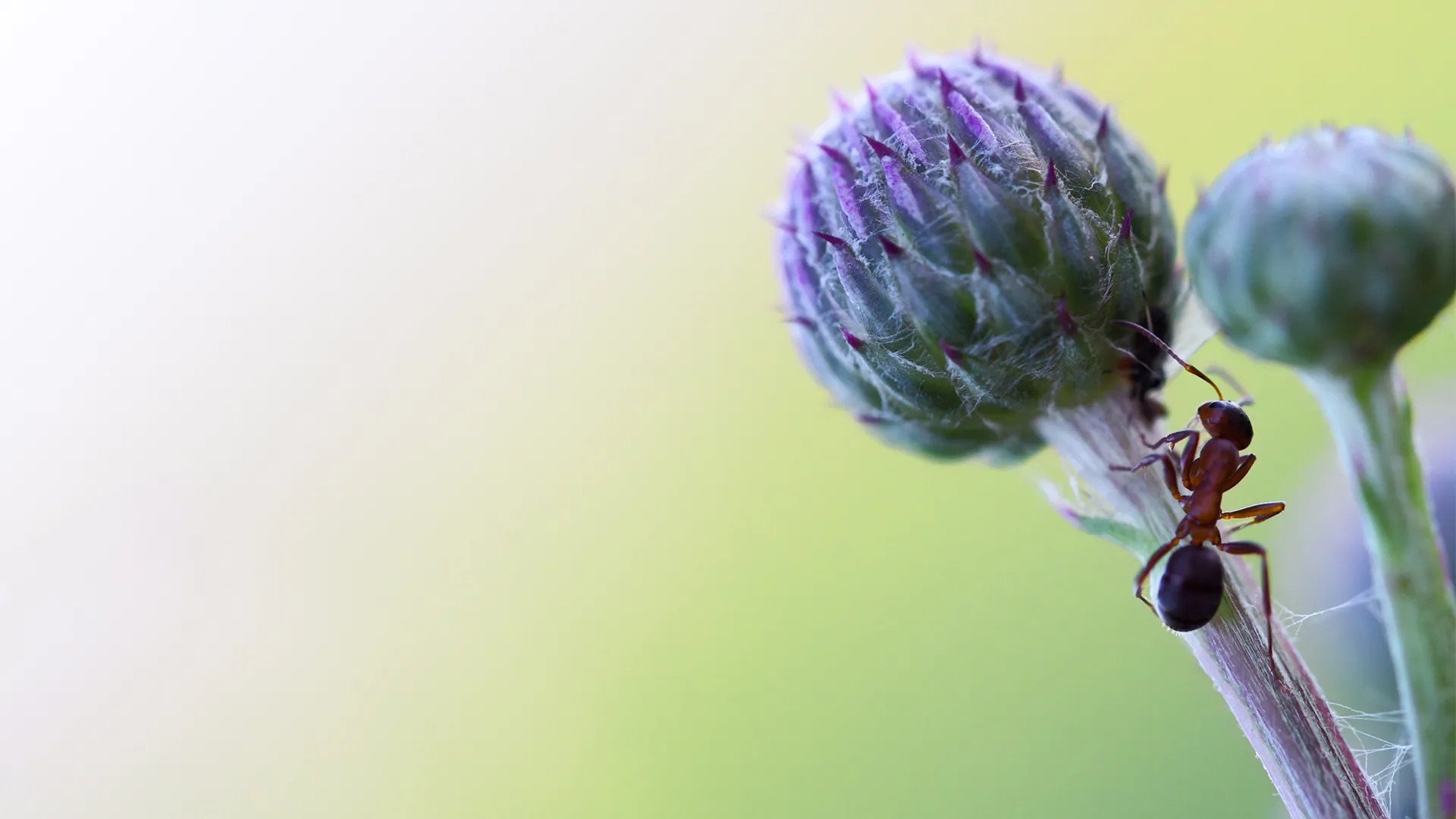Home>Gardening News and Trends>Latest News>When Are Insects Most Active


Latest News
When Are Insects Most Active
Published: December 11, 2023
Find out the latest news on when insects are most active and how to deal with them. Stay informed and take control.
(Many of the links in this article redirect to a specific reviewed product. Your purchase of these products through affiliate links helps to generate commission for Chicagolandgardening.com, at no extra cost. Learn more)
Table of Contents
Introduction
When it comes to the fascinating world of insects, their activity patterns can vary greatly depending on various factors. Understanding when insects are most active is not only interesting from a scientific perspective, but it can also be useful in our daily lives. Whether it’s planning outdoor activities, managing pest control, or simply appreciating nature, knowing when insects are most active can help us navigate the buzzing world around us.
There are several factors that influence insect activity, including seasonal variations, daily patterns, and environmental conditions. By exploring these factors, we can gain valuable insights into when insects are most likely to be active and understand the reasons behind their behavior.
In this article, we will delve into the different factors that influence insect activity patterns and how they can vary throughout the year and within a day. We will also discuss the impact that environmental factors, such as temperature and humidity, have on the behavior of insects. So, let’s embark on a journey into the intriguing realm of insect activity and discover when these tiny creatures are the most lively.
Factors that Influence Insect Activity
The activity of insects is influenced by a variety of factors, ranging from environmental conditions to biological factors. Understanding these factors can help us anticipate when insects are most likely to be active and take appropriate measures accordingly.
One of the key factors that influence insect activity is temperature. Insects are ectothermic organisms, meaning their body temperature is regulated by external sources of heat. As a result, their metabolic rate and activity levels are directly influenced by temperature. Most insects are more active in warmer temperatures, with peak activity occurring during the day when temperatures are highest.
Another important factor is the availability of food sources. Insects are highly specialized in their feeding habits, and different species have specific dietary requirements. When their preferred food sources are abundant, insects are more likely to be active in search of nourishment. For example, bees are most active during the flowering season when nectar and pollen are plentiful.
Life cycle stages also play a role in insect activity. Some insects, such as certain species of butterflies and beetles, are most active during their adult stage, typically when they are looking to mate and lay eggs. On the other hand, pests like mosquitoes tend to be most active during their larval stage, as they require water sources for reproduction.
Physical and biological factors also come into play. Certain insects are more active during specific times of the day. For example, mosquitoes are known to be more active during twilight hours, while fireflies are most active during the evening. Additionally, the presence of predators can impact insect activity. When predators are abundant, insects may alter their activity patterns to reduce the risk of predation.
Overall, a combination of environmental conditions, food availability, life cycle stages, and interactions with other organisms shape the activity patterns of insects. By understanding these factors, we can better predict when insects are most likely to be active and take appropriate precautions or make informed decisions in various situations.
Seasonal Patterns of Insect Activity
Insects exhibit distinct seasonal patterns in their activity, which can be attributed to changes in environmental conditions and life cycle events. Understanding these seasonal patterns can help us anticipate when certain insects are most active and plan accordingly.
Spring marks the beginning of increased insect activity as temperatures rise and plant growth resumes. Many insect species, such as bees, butterflies, and beetles, emerge from hibernation or overwintering and start their reproductive activities during this season. This is also a time when we see an abundance of pollinators, as they play a vital role in the pollination of flowering plants.
As summer arrives and temperatures reach their peak, insect activity tends to be at its highest. A wide range of insects, including flies, ants, and mosquitoes, thrive in the warm and humid conditions of summer. For farmers, this can be a critical time for pest management, as crop-damaging insects are more active and can cause significant damage if not controlled.
Autumn brings about changes in temperature and daylight hours, signaling the transition to cooler weather. During this season, certain insect species, particularly those that have completed their life cycle, begin to prepare for hibernation or migration. For example, monarch butterflies embark on their annual migration to warmer regions during the fall.
Winter is generally a quieter time for insect activity, especially in colder regions. Many insects enter a state of dormancy or hibernation, where their metabolic rates slow down, and they conserve energy to survive the harsh conditions. However, some insects, like snow fleas, are adapted to survive and remain active even in freezing temperatures.
It’s important to note that the specific seasonal patterns of insect activity can vary based on geographical location and climate. In warmer regions or tropical climates, insect activity may remain relatively high year-round, while in colder regions, the activity may be more restricted to the warmer months.
By understanding the seasonal patterns of insect activity, we can better prepare for potential encounters, take preventive measures, and appreciate the fascinating dynamics of insect life throughout the year.
Daily Patterns of Insect Activity
In addition to seasonal variations, insects also exhibit daily patterns of activity that can be influenced by factors such as light, temperature, and their own biological rhythms. Understanding these daily patterns can provide valuable insights into when insects are most active during the day.
Many insects are diurnal, meaning they are most active during daylight hours. This is because they rely on sunlight for energy and navigation. Bees, for example, are known for their early morning activity when flowers open, and they can gather nectar and pollen efficiently. Butterflies are also diurnal insects and can be observed fluttering about during the warmer hours of the day.
On the other hand, some insects are nocturnal and are most active during the night. These insects have adapted to low-light conditions and have specialized sensory organs to navigate and locate food sources in the dark. Examples of nocturnal insects include moths, beetles, and certain types of mosquitoes.
Twilight, which occurs during the transition from day to night and from night to day, can be a particularly active time for certain insects. This is known as crepuscular activity. Many insects, such as mosquitoes and fireflies, are known to be more active during these low-light periods.
The daily patterns of insect activity can also be influenced by temperature. Insects are ectothermic, meaning their body temperature is regulated by external conditions. As temperatures rise during the day, many insects become more active and undergo their daily routines. As evening approaches and temperatures drop, insect activity tends to decrease.
It’s important to note that not all insects follow the same daily activity patterns. Some insects, like ants or termites, may be active throughout the day, while others may have specific activity peaks during certain hours. Understanding the daily patterns of specific insect species can be helpful in managing pest control measures or optimizing observations during field studies.
By observing and studying the daily patterns of insect activity, we can deepen our understanding of their behavior and appreciate the intricate rhythms that govern their lives. It also provides valuable knowledge for individuals involved in agriculture, pest management, or ecological research.
Impact of Environmental Factors on Insect Activity
Insects are highly adaptable creatures and their activity levels are strongly influenced by environmental factors. Changes in temperature, humidity, light, and other ecological conditions can have significant impacts on insect behavior and patterns of activity.
Temperature is one of the most influential factors on insect activity. As ectothermic organisms, insects rely on external sources of heat to regulate their body temperature. Warmer temperatures generally increase metabolic activity, leading to heightened movement and foraging behavior. In contrast, colder temperatures can slow down insect metabolism and reduce overall activity levels.
Humidity is another key factor that affects insect activity. Insects with high moisture requirements, such as certain species of ants and termites, tend to be more active in humid conditions. Conversely, arid environments can limit insect activity, as they may struggle to find sufficient water sources for survival.
Light plays a crucial role in controlling the activity patterns of many insects. Photoperiod, the duration of light and darkness in a day, influences various physiological processes in insects, including reproduction, feeding, and migration. Certain insects, like mosquitoes and fireflies, are more active during specific lighting conditions, such as twilight or moonlit nights.
Food availability is another environmental factor that directly impacts insect activity. Insects are highly specialized in their feeding habits and require specific food sources to sustain their energy levels. When food sources are abundant, insect activity increases as individuals search for, consume, or defend these resources. Conversely, limited food availability can lead to reduced activity or the shifting of foraging patterns.
In addition to these factors, other environmental influences such as wind, rainfall, and vegetation can also impact insect activity. For instance, strong winds can make it challenging for insects with delicate wings to fly, leading to reduced activity. On the other hand, rainfall can stimulate certain insects, such as ground beetles, leading to increased activity as they emerge from their sheltered habitats.
Overall, the impact of environmental factors on insect activity is complex and multifaceted. Insects have evolved various adaptations to cope with changing environmental conditions, but extreme or unfavorable conditions can significantly alter their behavior and activity levels. By understanding these environmental influences, we can gain insights into the dynamics of insect populations and better manage insect-related challenges in various situations.
Conclusion
Understanding when insects are most active is not only a fascinating aspect of the natural world but also a practical consideration in various aspects of our lives. By exploring the factors that influence insect activity, including seasonal and daily patterns, as well as environmental impacts, we can gain valuable insights into the behavior of these remarkable creatures.
Seasonal patterns of insect activity, driven by changes in temperature, daylight hours, and other ecological factors, provide a roadmap for anticipating when certain insects will be most active throughout the year. Spring brings the emergence of many insect species, while summer is a time of peak activity. Autumn marks a transition period, and winter tends to be a quieter time for insect activity in colder regions.
Daily patterns of insect activity, influenced by factors such as sunlight, temperature, and biological rhythms, reveal the specific times of day when insects are most active. Diurnal insects thrive during daylight hours, while nocturnal insects adapt to low-light conditions and become active during the night. Twilight periods can also be particularly active for certain insects.
Environmental factors, including temperature, humidity, light, and food availability, play a significant role in shaping insect activity levels. Changes in these factors can directly impact the behavior and movement of insects, influencing their foraging, mating, and survival strategies.
By understanding when insects are most active, we can better plan outdoor activities, manage pest control measures, and gain a deeper appreciation for the intricate dynamics of insect life. Whether it’s observing the buzzing activity of bees during the summer or adjusting pest management strategies based on seasonal fluctuations, a knowledge of insect activity patterns can lead to more effective and sustainable approaches.
So next time you step out into nature or encounter insects in your everyday life, take a moment to consider when they are most active and appreciate the intricate dance of life happening all around us.







